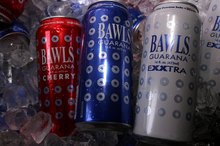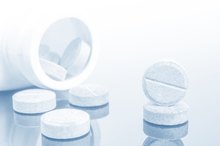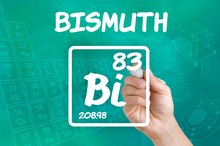What does fact checked mean?
At Healthfully, we strive to deliver objective content that is accurate and up-to-date. Our team periodically reviews articles in order to ensure content quality. The sources cited below consist of evidence from peer-reviewed journals, prominent medical organizations, academic associations, and government data.
The information contained on this site is for informational purposes only, and should not be used as a substitute for the advice of a professional health care provider. Please check with the appropriate physician regarding health questions and concerns. Although we strive to deliver accurate and up-to-date information, no guarantee to that effect is made.
List of Foods That Contain Quinine
Quinine gives the bitter taste to the tonic water that's often used as a mixer with vodka or gin. It is known as an anti-malarial treatment and has also been used to treat arthritis and lupus. Some sufferers of restless leg syndrome (RLS) and nighttime leg cramps claim that quinine provides relief, but the Food and Drug Administration (FDA) has issued a warning about serious side effects--even death--associated with quinine use in some people.
If you are experiencing serious medical symptoms, seek emergency treatment immediately.
What is Quinine?
Quinine is a naturally occurring substance in the bark of the cinchona tree, which is found in the Andes Mountains of Peru and Ecuador. Quinine was introduced to Europe in the mid-1600s, but after the destruction of many cinchona trees and the resulting rarity of quinine, a way to synthesize quinine was needed. This was not fully accomplished until two molecular chemists, Robert Woodward and William Doering, were able to complete the process in 1944.
Is Tonic Water Safe?
What are the Side Effects of the Wormwood Herb
Learn More
The simple answer is yes. Like any food or drink, tonic water could bring about a reaction in anyone who is sensitive or allergic to quinine. Such instances are rare, however. In the United States, the FDA limits the amount of quinine allowable in tonic water to about one-10th the prescription dose. Manufacturers add just enough quinine to carbonated water to provide that characteristic bitter taste. Sugar, corn syrup and citrus flavors are often added to make tonic water more palatable. Bitter lemon and bitter lime drinks tend to be more popular in Europe than they are in the U.S.
- Like any food or drink, tonic water could bring about a reaction in anyone who is sensitive or allergic to quinine.
- In the United States, the FDA limits the amount of quinine allowable in tonic water to about one-10th the prescription dose.
Non-Prescription Quinine: Caution
Many Internet sources offer quinine teas and quinine powder to add to your food. The FDA has issued strong warnings about using such products. Side effects can include vision and hearing problems, headache, irregular heartbeat and even kidney failure. In the U.S., there have been about 100 quinine-caused deaths over the last 40 years, according to the FDA, and hundreds of permanent injuries. Quinine acts as a mild muscle relaxant in small doses, which is why some say that it is an effective treatment for leg cramps but also the reason that quinine can be dangerous in doses that are not carefully measured and prescribed. Self-medication using quinine can be extremely risky, so see your doctor for treatment of conditions where quinine may be prescribed. Quinine is currently approved only for the treatment of malaria in the U.S. In fact, the FDA has banned all but one brand of quinine, Qualaquin, for medicinal use.
- Many Internet sources offer quinine teas and quinine powder to add to your food.
- Self-medication using quinine can be extremely risky, so see your doctor for treatment of conditions where quinine may be prescribed.
The Bottom Line
Diet Tonic Water Vs. Regular Tonic Water
Learn More
Drinking tonic water in moderation is fine if you enjoy its taste in soft drinks or cocktails. See your doctor, however, if you are using it to treat leg cramps, as there may be other products available. Don't buy off-brand quinine from the Internet or from vendors outside the United States.
- Drinking tonic water in moderation is fine if you enjoy its taste in soft drinks or cocktails.
Related Articles
References
- 3DChem
- Drugs.com
- Achan J, Talisuna AO, Erhart A, et al. Quinine, an old anti-malarial drug in a modern world: role in the treatment of malaria. Malar J. 2011;10:144. doi:10.1186/1475-2875-10-144
- U.S. Food and Drug Administration. FDA drug safety communication: New risk management plan and patient medication guide for Qualaquin (quinine sulfate). Updated August 3, 2017.
- Howard MA, Hibbard AB, Terrell DR, Medina PJ, Vesely SK, George JN. Quinine allergy causing acute severe systemic illness: report of 4 patients manifesting multiple hematologic, renal, and hepatic abnormalities. Proc (Bayl Univ Med Cent). 2003;16(1):21-6. doi:10.1080/08998280.2003.11927884
- Winter FD. Immune thrombocytopenia associated with consumption of tonic water. Proc (Bayl Univ Med Cent). 2015;28(2):213-6. doi:10.1080/08998280.2015.11929233
- Winter FD. Immune thrombocytopenia associated with consumption of tonic water. Proc (Bayl Univ Med Cent). 2015;28(2):213-6. doi:10.1080/08998280.2015.11929233
Writer Bio
Denise Dayton, M.Ed., M.S. teaches career readiness and workplace success, along with other business courses, at a small college in New England.









